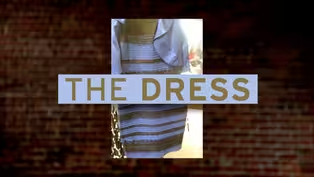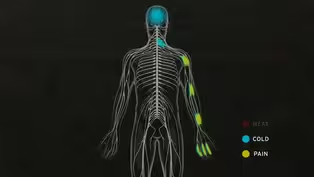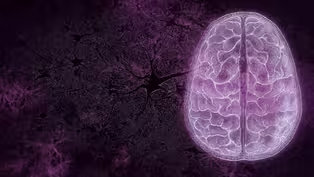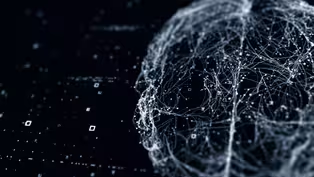
Is the Human Brain Actually Two Minds?
Clip: Season 50 Episode 9 | 5m 17sVideo has Closed Captions
Severing the connection between the two halves of the brain reveals how the hemispheres function.
The two hemispheres of the brain communicate via a bundle of fibers called the corpus callosum. For some people with epilepsy, seizures can quickly spread to the other through this region. But if that bridge is surgically severed, a seizure can no longer cross.
Problems playing video? | Closed Captioning Feedback
Problems playing video? | Closed Captioning Feedback
National Corporate funding for NOVA is provided by Carlisle Companies and Viking Cruises. Major funding for NOVA is provided by the NOVA Science Trust, the Corporation for Public Broadcasting, and PBS viewers.

Is the Human Brain Actually Two Minds?
Clip: Season 50 Episode 9 | 5m 17sVideo has Closed Captions
The two hemispheres of the brain communicate via a bundle of fibers called the corpus callosum. For some people with epilepsy, seizures can quickly spread to the other through this region. But if that bridge is surgically severed, a seizure can no longer cross.
Problems playing video? | Closed Captioning Feedback
How to Watch NOVA
NOVA is available to stream on pbs.org and the free PBS App, available on iPhone, Apple TV, Android TV, Android smartphones, Amazon Fire TV, Amazon Fire Tablet, Roku, Samsung Smart TV, and Vizio.
Buy Now
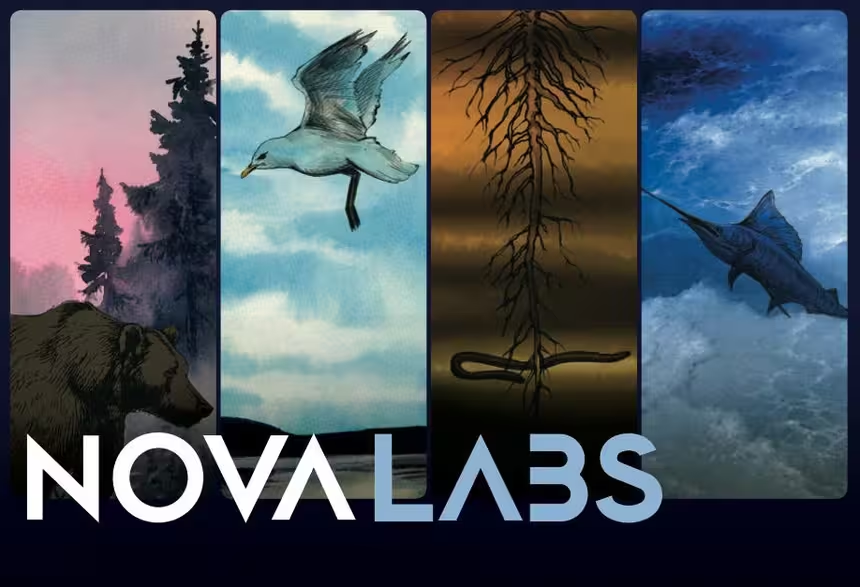
NOVA Labs
NOVA Labs is a free digital platform that engages teens and lifelong learners in games and interactives that foster authentic scientific exploration. Participants take part in real-world investigations by visualizing, analyzing, and playing with the same data that scientists use.Providing Support for PBS.org
Learn Moreabout PBS online sponsorship- For some people, an entire half of their brain can't really communicate with the rest.
These were people who have undergone split brain surgery, and it's as if... (cloned image whooshes) - [Both] They have two minds in a single brain.
- The human brain contains two sides, the left hemisphere and the right hemisphere, right?
And they are connected by a big bundle of fibers.
It's called the corpus callosum.
All the communication from one side of the brain to the other has to pass through this fiber bundle.
- [Heather] For some people with epilepsy, a seizure in one hemisphere can quickly spread to the other by way of the corpus callosum.
But if that bridge is surgically severed, a seizure can no longer cross to the other side of the brain.
In addition to treating epilepsy, these surgeries have also led to some astounding research into how the two hemispheres function.
- [Michael Miller] With your left hand, make me the a-okay sign.
(indistinct chattering) - [Heather] To learn more about these fascinating studies, I met two pioneers in the field, Michael Miller and Michael Gazzaniga.
Michael Miller asked me to step into his lab to do a few simple tests, just like the ones he's conducted with patients after a split brain surgery.
- So Heather, what you're gonna see are two shapes.
They're gonna come up on the screen.
(playful music) You'll draw the shape on the left side of the screen with your left hand and the shape on the right side of the screen with your right hand.
And I want you to draw them as quickly as you can at the same time.
(Heather sighs) Okay?
- Okay.
Piece of cake, right?
(test system beeps) Oh god.
- [Michael Miller] Beautiful.
(Heather chuckles) Okay, I'm not sure what you're drawing over here but... (Michael Miller and Heather laughing) - Oh.
- (laughs) That's okay.
- Did I mention I didn't get that much sleep last night?
(light music) The left side of the brain controls most of the right side of the body, and the right side of the brain controls most of the left side of the body.
(music continues) (pen scrapes) What happens is I start out trying to do different things and then they just started like sync up together.
- [Michael Miller] Yeah, yeah.
- Come on, man.
(Michael laughs) - [Michael Miller] It's perfectly normal.
So I mean, what's happening is that the motor commands in one hemisphere are interfering with the motor commands in the other hemisphere.
- [Heather] It was basically impossible for me to force my hands to draw two different things at the same time.
But for someone whose two hemispheres are disconnected, there's no interference.
It's almost as if there's one mind controlling the left hand and a completely different mind controlling the right hand.
And it isn't just movement that's split across the hemispheres.
Only half of your visual field goes to each side of the brain.
- [Michael Miller] When you're looking straight ahead, everything to the left side of that space goes only to the right hemisphere.
And the opposite is true for the right side of the space.
- The left part of the brain is where your language and speech centers are.
That enables you to talk, enables you to understand language and all the rest.
And the right side of your brain is very important in the evaluation of emotions, evaluation of visual space.
- [Heather] The researchers conducted tests to explore how a split brain patient's two hemispheres work independently from one another, including a now famous experiment of a patient named Joe.
- [Michael Miller] Look right at the dot.
- [Heather] By quickly flashing a word to just the left side of his visual field.
- [Michael Miller] See anything?
- [Heather] That word would go exclusively to the right half of his brain, the half that can't talk.
- So the only way we're gonna know that it registered is if he can write something out, okay?
- With his hand that is controlled by his right hemisphere?
- Exactly, his left hand.
- The left hand.
- [Michael Gazzaniga] We flash the word Texas.
- [Michael Miller] Look right at the dot.
See anything?
- [Joe] It didn't flash.
I didn't see the word.
- [Heather] His right hemisphere is seeing it... - [Michael Gazzaniga] Well, he's seeing it, but the right hemisphere at this point in his surgery cannot talk.
- Right.
- [Michael Miller] Alright, I want you to draw for me that thing upside down.
- [Heather] So he claims to not have seen anything.
- [Michael Gazzaniga] Yeah.
- [Heather] Oh my God.
Wow.
(Michael Gazzaniga laughs) He was able to do Texas upside down.
- [Michael Miller] Now what's interesting is he had no idea what he's drawing.
And we know, because we saw the word.
- I can't tell what it is.
- The split brain phenomenon suggests that there can be two separated minds, if you will, inside of a skull.
The cooperation is on the paper, not inside the head.
It's an astounding example of cross queuing and management of two mental systems into one unified act.
And the idea is maybe that's going on in us all the time too.
(music fades)
How Your Brain Interprets Color
Video has Closed Captions
Clip: S50 Ep9 | 2m 24s | A vision scientist breaks down the infamous dress debate. (2m 24s)
Video has Closed Captions
Clip: S50 Ep9 | 3m 40s | This experiment shows how the brain can interpret — and misinterpret— pain. (3m 40s)
Your Brain: Perception Deception Preview
Video has Closed Captions
Preview: S50 Ep9 | 29s | Neuroscientists discover the tricks and shortcuts the brain takes to help us survive. (29s)
Your Memories Are Not as True as You Think
Video has Closed Captions
Clip: S50 Ep9 | 3m 51s | It turns out memories have a very shaky foundation. (3m 51s)
Providing Support for PBS.org
Learn Moreabout PBS online sponsorship
- Science and Nature

Capturing the splendor of the natural world, from the African plains to the Antarctic ice.













Support for PBS provided by:
National Corporate funding for NOVA is provided by Carlisle Companies and Viking Cruises. Major funding for NOVA is provided by the NOVA Science Trust, the Corporation for Public Broadcasting, and PBS viewers.

